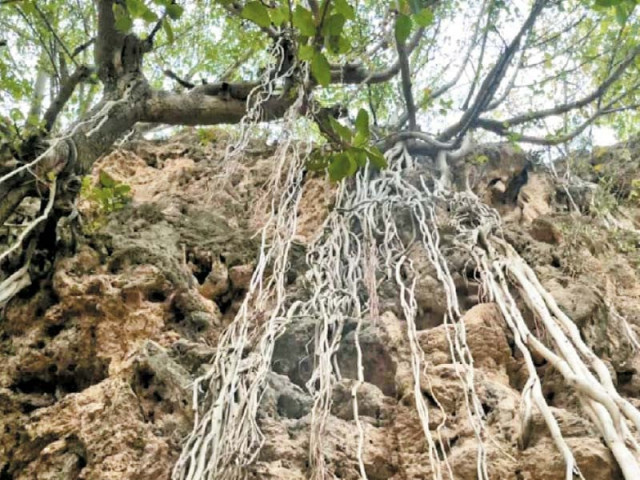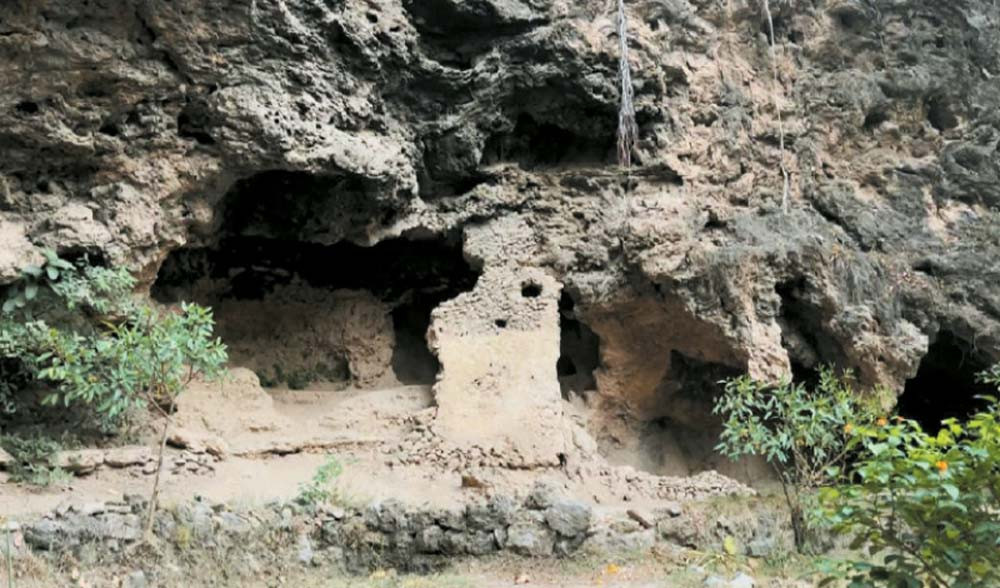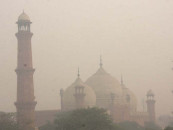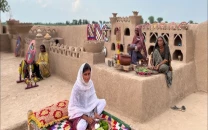Shah Allah Ditta caves – relic of ancient Buddhism
Delegation of Pakistani Buddhists from Sindh celebrate Vesak at sacred worship site

For the first time in recent history, Buddhists from Sindh performed their religious rites in the 2,500-year-old Buddhist caves situated in Shah Allah Ditta, a suburb of Taxila.
The village is named after Shah Allah Ditta, a dervish belonging to the Mughal era. Shah Allah Ditta is the oldest village in Islamabad – approximately 650 years old – and is home to ancient caves that echo the remnants of bygone civilisations and religions.
This year, Vesak or Buddha Day – a festival commemorating the birth, attainment of Nirvana and death of Buddhism founder Gautama Buddha – was celebrated in Pakistan in the month of May. This celebration is an integral part of Buddhism.
Vesak in 2022 was celebrated in Taxila and the surrounding Gandhara area, where the remains of Buddhist places of worship are located. Various events were also organised, and apart from foreign Buddhist monks, ambassadors of different countries and – for the first time – a Pakistani Buddhist delegation from Sindh participated in the festival.
The 2500-year-old Buddhist caves at the foot of Margalla Hills are located in west of Taxila, east of Islamabad and in the central area of Khanpur. Historically, these caves are located along an ancient road. When the city of Rawalpindi came into being in the 16th century, this road was used to travel directly from Kabul, Peshawar, Attock and Hassan Abdal to Rawalpindi, and from there to Lahore and Delhi. It also ran along the caves of Shah Allah Ditta and is also known as Grand Trunk Road or GT Road.
Over time, this road disappeared, but its remnants still exist today. All the religions including Hinduism, Buddhism, Jainism, Sikhism and Islam have revered these caves in every era. Many historical figures including Panini (a renowned Sanskrit grammarian), Alexander the Great, Chandragupta Maurya, Ashoka the Great, Kautilya Chanakya, Hazrat Khawaja Moinuddin Chishti, Data Ali Hujwiri, Sher Shah Suri and the famous Mughal Emperor Jahangir not only passed through this spot but also stayed and quenched their thirst with the cold water of the springs here.
A spring, a pond and a garden still exist near the Shah Allah Ditta Caves. There are some banyan trees in the garden, while all other fruit trees are gone. The water from the same spring was used to irrigate the garden adjoining the caves.
During the Mughal period, when India was the centre of Sufism originating from Arabia and Central Asia, a saint named Shah Allah Ditta stayed in this garden and was entombed here. The place formerly attributed to sadhus, monks, or jogis is today known for the famous Sufi Shah Allah Ditta.

A short distance from these caves is also an ancient baoli (stepwell) in the village of Kanthila, which is said to have been built by Sher Shah Suri.
According to the information given in the historical books about the boundaries of these caves, these caves made of Kanjur stones are 40 metres long, 60 metres wide and eight metres high.
These caves, which are of great importance in Buddhism, present a picture of desolation today where drug addicts have set up camp. According to the locals, scary sounds come from here at night and shadows can be seen moving.
Retired primary school teacher Juman, the group leader of the Buddhist delegation from Sindh, while talking to The Express Tribune, said, “I appeal the government to build a permanent place of worship for us where we can perform our religious rites.”
Juman further said that the white colour of the Pakistani flag is a reflection of the protection of minorities and religious freedom, but some minorities still do not enjoy the rights enshrined in the Constitution of Pakistan. He said, “I have never experienced such peace and tranquillity as I did today.”
Former Deputy Mayor of Islamabad Syed Zeeshan Naqvi while talking to The Express Tribune said that if appropriate steps are taken for the rehabilitation and repair of Buddhist places of worship, it will not only promote religious tourism but will also present a positive image of Pakistan in the world. "As a nation, we must protect the rights of minorities so that the message of peace and love can be conveyed," he added.
The pilgrims have called for the rehabilitation of the Shah Allah Ditta caves on an emergency basis, citing the example of the Gurdwara at Kartarpura. Steps have to be taken urgently to protect the Buddhist cultural heritage and open up new avenues for tourism, they said.
According to the National Database Registration Authority, there are a few thousand Buddhists in Pakistan, of which most belong to Sindh.
Published in The Express Tribune, June 10th, 2022.



















COMMENTS
Comments are moderated and generally will be posted if they are on-topic and not abusive.
For more information, please see our Comments FAQ